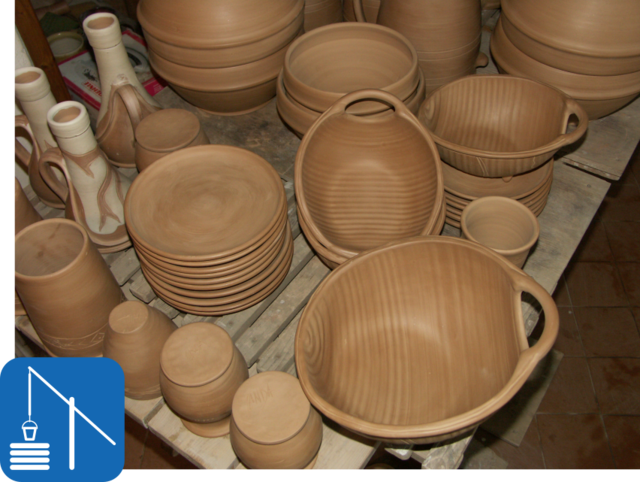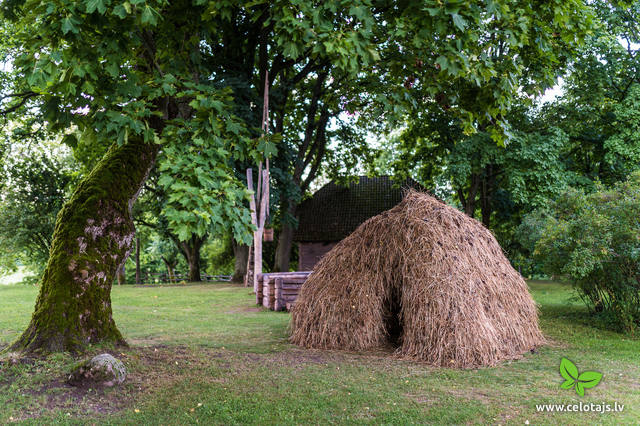
The historical heritage at agritourism farms
Agritourism related to historical heritage offers people a chance to learn about events and vivid turning points in the history of farming, animal husbandry, fishing, craftsmanship and food processing. Tourists can also learn about brilliant people who made excellent achievements in plant and animal selection, as well as about amusing stories about the lives of these frequently unique and naughty personages.
Farming
The oldest crop in Latvia is barley, after which farmers began to grow wheat, millet, peas, beans, rye and oats. Linen was planted to produce textiles. The proportion of rye gradually increased to the level of barley, and bread became a key part of people's nutrition. Farming developed very quickly when horses were tamed for farm work, thus replacing hand labour. During the 14th and 15th centuries, the baronial estates in Latvia gradually started to produce things for the market, and exports from the territory of Latvia included grain, flax, hemp, wax, ashes (to produce powder) and timber. Late in the 19th century, the Russian Empire implemented a law on establishing "grain magazines," with increasing attention being paid to air temperature and the qualities of land. During the 19th century, there was an increasing interest in plant selection to improve breeds. The first major achievement was the establishment of sugar beets as a new crop, and the first mineral fertilisers appeared in the Baltic provinces during the late 19th century. Early in the 20th century, noblemen owned so much land that there was a lack of properties in the countryside. One-half of rural residents had no land of their own and were forced to become field workers, renters or servants who could not own properties. Agrarian reforms were implemented in Latvia after World War I, between 1920 and 1937. The aim was to establish new farms and expand existing ones. During the Soviet occupation, which started in 1940, collectivisation of farmland began, and kolkhozes were established.
See full description (In Latvian)
Craftsmanship
Craftsmanship is an ancient activity, and people processes flax, wood and skins, as well as bone and wood along with doing their basic farm work. Merchants and master craftsmen from abroad gradually turned up in Latvia, and local residents became apprentices. Until the 19th century, Latvians in the countryside produced everything that they needed for life and work at home, but over the course of time, the situation changed, and various craftsmanship centres began to appear. Small industrial facilities were established at baronial estates and in cities, and this involved people who engaged in handicrafts, people who manufactured things at home, as well as professional artisans. Industry flourished in the 20th century, and craftsmanship began to wither away, but after World War II, when there were shortages of everything, there was increasing demand for traditional handicrafts. The importance of these talents has only increased in recent times.
See full description (In Latvian)
Animal husbandry
The first evidence of animal husbandry in Latvia dates back to the Stone Age, when livestock was used for meat, skins and milk, the bones being used to produce tools. During the 13th century, animal husbandry was the second most important activity after farming. The point was to provide people with beef, mutton, pork, milk, butter, etc., to breed horses an bulls to pull carts and other equipment, to produce wool for apparel, and to breed horses for military needs. An important secondary activity was beekeeping, and honey was the main sweetener for many centuries. Wax was increasingly used to make candles, and it also became a key export product.
See full description (In Latvian)
Fisheries and fishing
Fishing began in Latvia during the 9th millennium BC, and it has always been an important part of human nutrition. In later years, owners of land and waterways usually leased fishing rights to local farmers, who had to turn over the so-called "lord's catch" to their masters. In Mērsrags, for instance, there were 13 landowners in the late 18th century who were required to supply the local baron each year with 4,000 dried and salted herrings, 500 sprats, 330 flounders, etc. During the 1820s, there were some 4,000 fishermen in Latvia who were members of co-operatives. During the latter half of the 20th century, fishing equipment became far more durable, effective and diverse, thus making them appropriate for all kinds of weather conditions and all kinds of fish.
See full description (In Latvian)
Vegetable growing
Vegetable growing in Latvia developed along with farming. The first vegetables were turnips, then peas and beans, and then white cabbage. Cabbage and turnips were the main vegetables in the 14th century, but after that the range of vegetables expanded considerably to include onions, garlic, carrots, rutabagas, beets, cucumbers, parsley, horseradish and various leafy vegetables. Tomatoes appeared much later and became of commercial importance only in the early 20th century. Vegetable growing particularly flourished in the early 19th century, when the first breed selection specialists and gardening propagandists appeared on the scene. Another period of rapid development was after World War I, when vegetable growing had been badly damaged by the war, and seeds had to be imported from abroad. The same happened during World War II, after which most land in Latvia was controlled by kolkhozes. Agronomists did a great deal to develop vegetable growing during the early 20th century.
See full description (In Latvian)
Gardening
For more on the history and diversity of gardening, click here.











